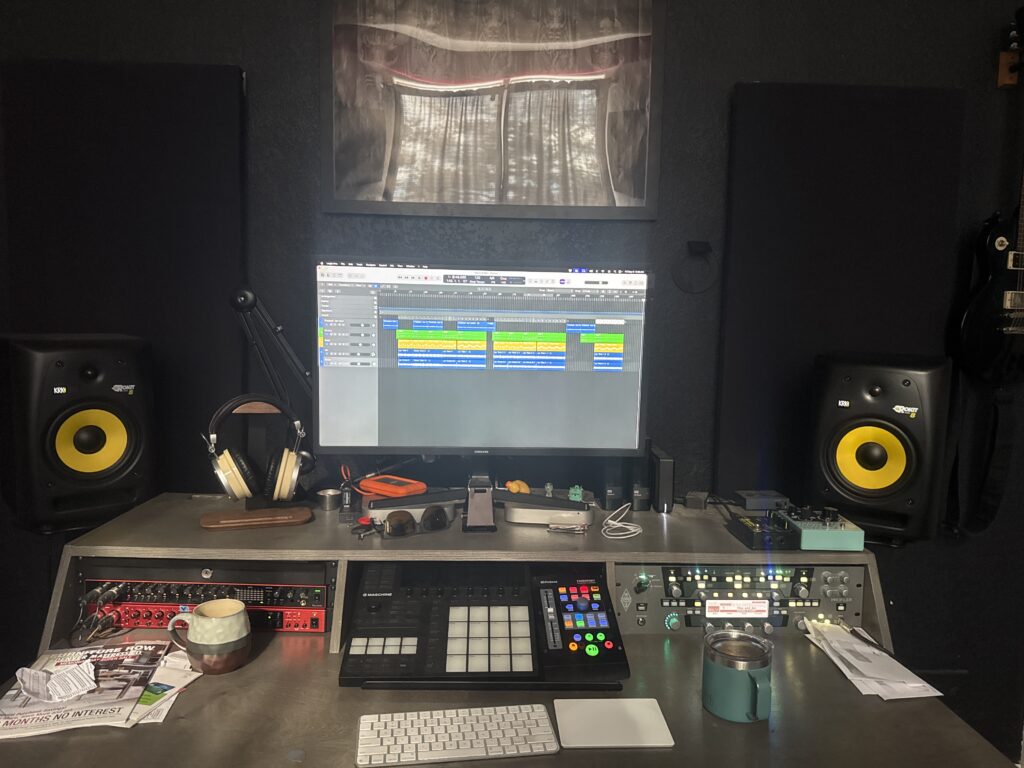![]()
Why Build a Home Recording Studio?
The rise of affordable technology has made it easier than ever for musicians and producers to set up a home recording studio. Whether you’re tracking full albums, producing beats, or simply laying down demos, a well-planned home studio allows you to work on your own schedule, experiment freely, and take full creative control of your projects.
Unlike renting commercial studio time, your home setup can evolve as your needs grow, allowing you to invest gradually while still producing high-quality recordings.
Essential Gear for Your Home Studio

You don’t need to break the bank to get started. Here’s a simple list of essentials that form the backbone of most home recording studios:
- Computer: Nearly any modern desktop or laptop can handle recording duties, as long as it has enough processing power and RAM.
- Digital Audio Workstation (DAW): Software like Logic Pro, Ableton Live, Pro Tools, or Reaper will serve as your main recording platform.
- Audio Interface: This device converts analog signals (like vocals or guitars) into digital data your DAW can process. Popular models include Focusrite Scarlett and Universal Audio Apollo.
- Microphones: A quality condenser mic is a versatile starting point for vocals and acoustic instruments.
- Studio Monitors: Flat-response speakers allow you to hear a more accurate representation of your mix.
- Headphones: Closed-back headphones are great for tracking, while open-back models are better for critical listening.
- Cables & Stands: Don’t overlook the small stuff—proper mic stands, XLR cables, and pop filters make a big difference.
Treating Your Recording Space
The biggest obstacle many home producers face is poor room acoustics. Untreated rooms can cause unwanted reflections, bass buildup, and inaccurate monitoring. Fortunately, even basic acoustic treatment can greatly improve your results:
- Acoustic Panels: Absorb mid and high frequencies to reduce reflections.
- Bass Traps: Help control low-end build-up in room corners.
- Carpeting & Rugs: Help tame some of the harsh reflections off hard floors.
A properly treated room ensures that what you’re hearing in your monitors accurately reflects your mix, saving you headaches when your tracks are played elsewhere.
Learning to Produce Professionally
Building a home recording studio is just the first step. The real challenge lies in learning how to capture great performances, mix tracks effectively, and master your final product. Thankfully, there’s an abundance of tutorials, online courses, and communities dedicated to home recording techniques.
Some important areas to focus on include:
- Microphone placement
- Gain staging
- EQ and compression
- Balancing levels and panning
- Using reference tracks while mixing
Expanding Over Time
One of the best aspects of a home recording studio is its flexibility. As your skills improve and your projects grow more complex, you can slowly expand your setup with additional microphones, outboard gear, MIDI controllers, and specialty plugins. Many professional producers started exactly this way—building skills in small spaces before expanding to larger studios.
Conclusion: Creativity Over Gear
While gear is important, the most valuable asset in your home recording studio is your creativity and willingness to experiment. Great recordings have been made in bedrooms, garages, and basements with minimal equipment. Focus on developing your ear, refining your workflow, and capturing inspired performances—the gear will follow.
